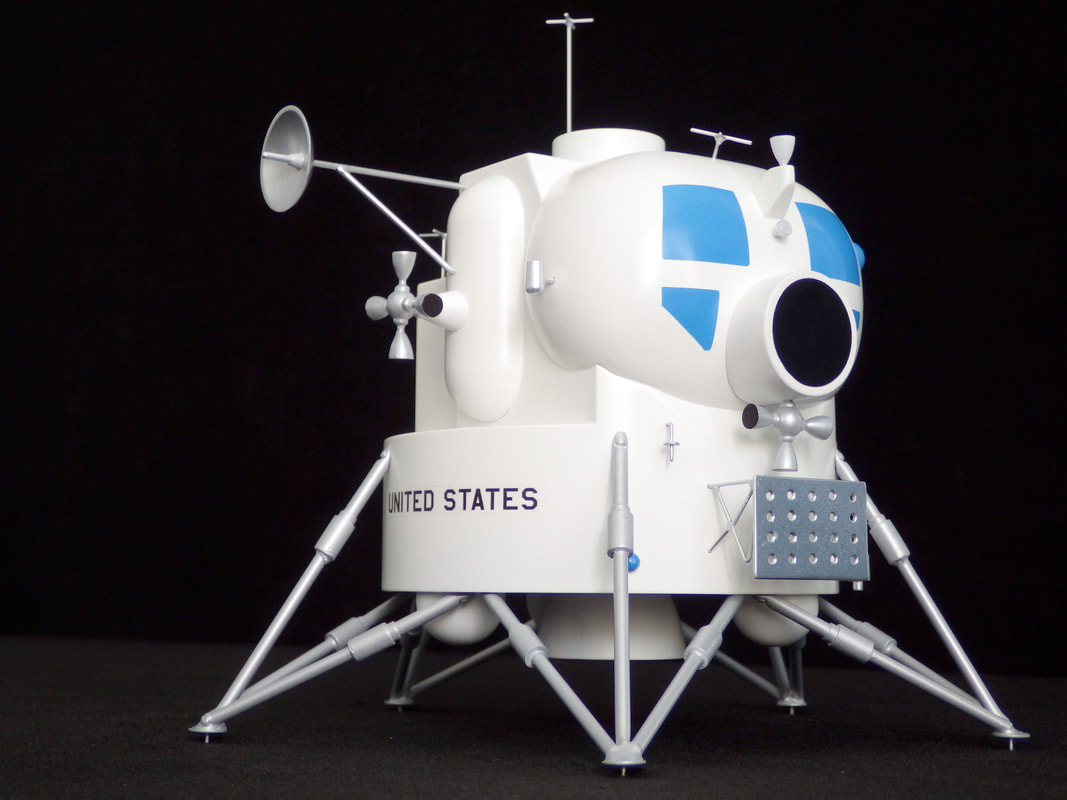Grumman Lunar Excursion Module (LEM)
Prototype D (1962)
Price: TBD
STATUS: IN DEVELOPMENT
STATUS: IN DEVELOPMENT
About the Design
Early in the development of Project Apollo, NASA engineers decided to assign the mission's two principal stages -- Earth/Moon travel and the lunar landing/ascent -- to separate vehicles. (As opposed to an all-in-one spacecraft.)
The landing would be done by a purpose-designed craft dubbed the Lunar Excursion Module (LEM), later called simply the Lunar Module (LM). When designing this unique craft, engineers at Grumman Aviation knew it would need to be large enough to carry two astronauts to the moon and back to lunar orbit, would need to be divided into two stages (descent and ascent) and, because it was operating in a vacuum, it didn't need any of the aerodynamic features found in conventional aircraft or rockets. The LEM went through several iterations before Grumman settled on this spider-like design, the Prototype D. Since a sphere was the most practical design for retaining a pressurized atmosphere, the command compartment was basically a large ball fitted into a blocky rocket casing. The sphere was then fitted with four large windows to give the astronauts -- who were to be seated -- maximum visibility. This was the design released to the public in 1962 and became, in the popular mind, the model for the future lunar lander for many years. However, the seats, the windows and even the sphere were later deemed too heavy, and Grumman redesigned the LEM to be smaller and lighter, most noticeably halving the number of windows and relying on a simple straight-line architecture rather than shapes with complex curves. |
About the Model
To reserve your copy, email FantasticPlast@aol.com. |

